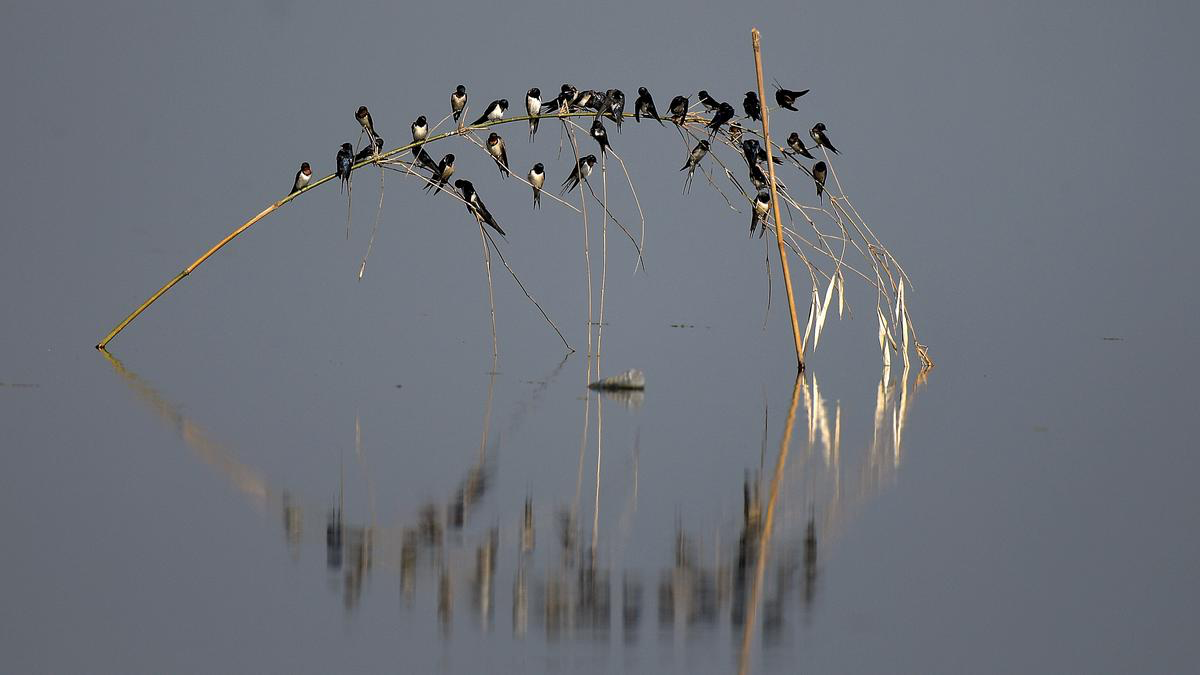Description

Disclaimer: Copyright infringement not intended.
Context: Assam’s only Ramsar site troubled by developmental projects and urban waste has 30 more waterfowl species than the total counted in 2022.
Details:
About Deepor Beel:
- It is a perennial freshwater lake
- It is the only wetland in Assam designated as a site of importance for “conservation and sustainable use” under the Ramsar Convention on Wetlands.
- The landscape of Deepor Beel, a riverine wetland in the Kamrup district in the lower Brahmaputra valley, is dynamic.
- It sustains over 200 species of birds, including about 70 species of migratory birds.
Issues:
Railway tracks:
- It is a treat to see wild Asiatic elephants from the Rani and Garbhanga Reserve Forests in Kamrup East Division bathing and feeding on nutritious aquatic food in the wetland.
- However, there is no guarantee that all the elephants foraging and frolicking in the water will return safely to the four elephant corridors crossing the railway track.
- For that matter, even their passage to the beel (lake) from the hills for a feast of the water hyacinth and shoots, rhizomes and flowers of the giant water lily, commonly known as makhana ( Eueyale ferox ), and other aquatic vegetation are fraught with danger.
- In the past two decades, at least 15 wild elephants were hit by passing trains while crossing the railway track.
.jpeg)
Unregulated and increasing fishing activities:
- Some residents of these villages can be seen rowing their flat-bottomed boats to collect seeds of the giant water lily and nymphaea nuts that are in high demand in local markets.
- Unregulated and increasing fishing activities have come into conflict with the activities of migratory birds.
- The winged visitors use the wetland as a staging site for depositing fats by preying on the fish species.
- Birdlife international declared Deepor Beel as an Important Bird Area (IBA) site. Some of the unique migratory bird species that can be spotted here are the white-eyed pochard, the greylag goose, Baer’s pochard and the gadwall, a dabbling duck.
Drainage:
- The Deepor Beel, which was notified under the Guwahati Water Bodies (Preservation and Conservation) Act, 2008, is the only major stormwater drainage for the ever-expanding capital city.
Shrinking area:
Contradictory positions of the River Rejuvenation Committee (RRC), Assam, and Guwahati Smart City Projects Limited on the total area of Deepor Beel is a reflection of the hard realities of the wetland standing at the crossroads of development priorities and conservation challenges.
Conservation threats:
An experts’ team identified the following major threats to the Deepor Beel ecosystem: Fragmentation of the hydrological regime, siltation, pollution, encroachment and land reclamation, species invasion, including alien species, unregulated recreation and tourism, over-harvesting of resources and climate change.
Unplanned urbanization:
In the past two decades, unplanned urbanization around Deepor Beel has reduced the original water spread area, which is a cause of worry. If the existing landscape of Deepor Beel is further altered, it could trigger flash floods in the area.
.jpeg)
https://www.thehindu.com/sci-tech/energy-and-environment/bird-species-count-up-in-deepor-beel-assams-lone-ramsar-site/article66346404.ece












